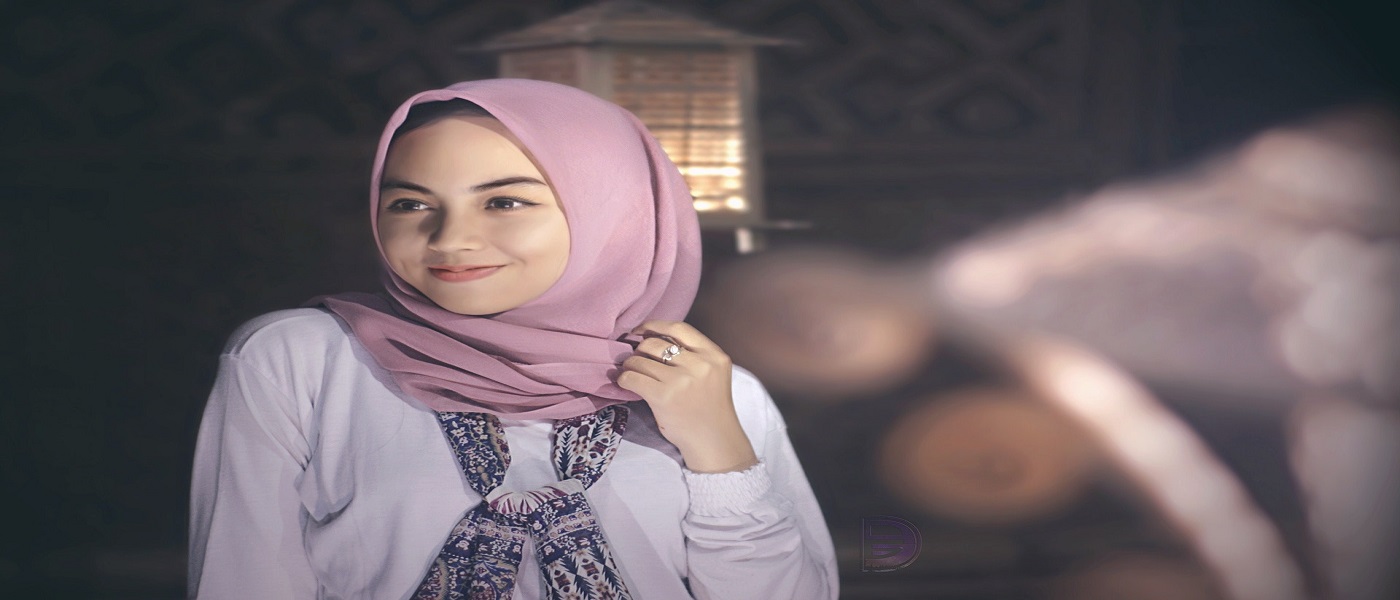

Are Women in Islam Inferior to Men?
The issue of women in Islam has always been a topic prone to misunderstanding and distortion, partly due to propaganda and media that misrepresent Islam and partly due to misbehavior of some Muslims or pseudo-Muslims, like ISIS and al-Qaeda, which are taken to represent the real visage of Islam.
Those who accuse Islam of considering a lower rank or status for women, mostly forget in their debates the differences between women and men which are necessitated by order of creation. Contrary to the popular myth, Islam has never acknowledged the superiority of men over women but has taken into account their differences and set appropriate regulations and guidelines based on them [1].
Women in Islam and Men Are of the Same Spirit
One of the issues addressed in the holy Quran is the creation of woman and man. Unlike some sacred books saying that: “woman was created out of an inferior stock to that of man or Adam's wife was created from one of his left-side parts of the body”, the Quran explicitly states in several verses that woman was created from nature of man, and from the same essence: “who created you from a single soul, and created its mate from it” (4:1), (7:189).
This demonstrates that women in Islam and men are of the same origin; hence, neither of them is superior to the other in the first place. Besides, men and women in Islam are each created for the other: “they are a garment for you, and you are a garment for them.” (2:187), and a woman is designated as the source of solace and comfort for man’s heart (30:21) which highlights her importance.
Universe Is Created to Serve Both Women and Men
It is directly and clearly stated in the Quran that the earth and the sky, the clouds and the winds, plants, and animals, all have been created for “mankind” [i]. It means that everything in the universe is there to serve every single human being and not only men.
Women in Islam Can Reach Spiritual Excellence
A woman is created to pave the way for improvement, like a man, and to reach the perfection that a human being deserves. The Quran has firmly declared that the afterlife reward and nearness of God do not depend upon one’s gender, but on his/her faith and deeds.
In verses (3:195) and (4:124), it is specified that whoever does acts of blessing and is a believer “whether male or female," God will give them an abundant reward.
The Quran also demonstrates the women’s role by emphasizing the importance of the company of a great and pious woman alongside every great and pious man (11-12: 66), (28: 7). The wives of Adam and Abraham, and the mothers of Moses and Jesus (PBUH) are the examples of great women mentioned in the Quran. There is, therefore, no superiority between men and women in Islam in the spiritual sense.
Menstruation is not a Weakness
Among the Jews and Arabs of the pre-Islamic age, there was a belief that a woman is filthy and weak during her menstrual period, so, she was isolated and avoided until she became clean. The Quran says: “They ask you concerning [intercourse during] menses. Say, ‘It is hurtful.’ So keep away from wives during the menses...”(2:222).
It means that menstruation is harm leaving the woman’s body, but it is not deplorable at all. Instead, menstruation is a preliminary to receive a blessing from God, a miracle that takes place inside a woman’s womb and places paradise at the feet of mothers [2].
Women in Islam Can Attain the Superior Social Status They Deserve
Men and women have undoubtedly “equal” rights in Islamic ideology, but the point is that their rights are not “similar”; in some conditions, women are given more rights while in other cases men have more rights. Every Muslim, female or male, is encouraged in Islam to seek knowledge.
The Prophet (PBUH&HP) said, “The acquisition of knowledge is compulsory for every Muslim, whether male or female” [3]. Education, learning and gaining knowledge are therefore duties assigned to every woman as much as to every man.
Regarding economic rights also, men are not superior to women unlike what is reported in the media and many beliefs. The misunderstanding about the inheritance, for example, is caused by ignoring the whole rights and duties each of men and women have and the balance between those rights.
That is why in the Quran, people are told: "Do not covet the advantage, which Allah has given some of you over others. To men belongs a share of what they have earned and to women a share of what they have earned." (4:32) [4].
Contrary to the false impression that says Islam has restricted women to stay at home and does not permit them to appear in the society, in a truly Islamic society, there must be women in many social positions. There must be, for instance, women physicians and women nurses for some special treatments that women need; or, women teachers as girls require some teachings and guidance when they reach the age of puberty.
The last word …Are Women Inferior to Men in Islam?
In Surah Nisa, it is said that: “Men are the managers of women, because of the advantage Allah has granted some of them over others, and by virtue of their spending out of their wealth” (4:34). Some use this verse to argue that Islam has given superiority to men, but the interpretation of these words will clarify the wisdom behind:
A family is known to be the smallest social unit. It requires, therefore, a supervisor or manager like any other social unit. This duty is generally attributed to the man in the family, mostly because men are physically stronger than women and they are less affected by their emotions [ii].
Moreover, the woman might also be given this responsibility after her husband’s death. Knowing the man as the supervisor of the family does not prove any inherent superiority in men, but assigns him the heavy responsibility of providing for his family needs from which women are exempted [5].
It is now clear that Islam has never inhibited women nor given them an inferior position to men; instead, it has undoubtedly caused the status of women to be improved by firstly recognizing their full personhood, and then describing the goal of their creation and the capacities and rights they have.
Notes:
[i] (2 :29), (24:32-33), (45:13)
[ii] Exceptions might exist, but, the general case is always considered to set the regulations and guidelines.
References:
- women position in Islam
- M. Reyshahri, "Mizan al-Hikma," T. 22691".
- M. B. Majlesi, "Bihar al-Anwar," vol. 1, p. 177.
- N. Makarem Shirazi, “Tafsir Nemooneh”.
- women in islam
- Women Inferior to Men
Share This Article

Why do Muslim Women Cover Their Hair?
In recent years, the scarf or Hijab in Islam that Muslim women wear on their heads to cover the hair has engaged many governments and has been among the headlines around the world. Since then, Hijab and covering the hair has been banned in certain government buildings, schools, and public services in some countries.
So the question is: what is that strong incentive that makes Muslim women even more resolute to maintain their belief in Hijab, despite all these controversies and conflicts?
Islamic Dress Code
According to most of the Islamic jurists, Muslim women are required to wear the clothing that covers their hair and entire body except the face and the hands, from the wrist to the fingers, in the presence of non-Mahrams or small boys whose consciousness of sex has developed or the evidence of sexual urge is noticed on them [1]. So, in the circumstances where non-Mahrams are not likely to be present, there is no need for Muslim women to wear Hijab in Islam.
In Surah Nur, women are ordered to “not expose their adornment except that which [necessarily] appears” (24:31). In a narration from Imam Sadiq (AS) and some other Islamic narrations [2], the hair is known to be an adornment for a woman, then, it is obligatory (Wajib) to cover it. The very first reason to veil the hair is, therefore, the commitment to the ruling on Hijab in Islam.
However, it should be noted that there has always been a natural tendency in human beings, especially in women, which made them not expose their body. This originates from an inner sense of modesty and decency which is stronger in women. Hence, the Islamic dress code is in complete accordance with the human nature.
Wearing Hijab in Islam and Mental Relief
It is evident that the beauties of a woman’s appearance, hair and body have always been appealing to men, and even women; that is why they usually appear on the advertisements to attract more customers for companies. On the other hand, women tend naturally to show their beauties and to get admiration. Men might be therefore easily appealed by the appearance of non-Mahram women, and this can eventually lead to a forbidden (Haram) gaze [i].
Committing a first forbidden (Haram) gaze and then consecutive ones affect both who looks (man) and who is looked at (woman). The one, who looks, remains thoughtful for a while by what he has seen and this may even last for days and weeks and lead even to some lustful thoughts. Also, one who has received a forbidden (Haram) gaze won’t be at ease and might feel her privacy invaded. So, both sides will be under some sort of stress and anxiety.
Since the two sides are both affected by a forbidden (Haram) gaze, women and men are equally required to take part to avoid such looks. To this kind of gaze and its consequent mental pressures, Islam orders women to cover their hair, and more generally their body. This is, in fact, the strategy to remove the external causes of sinful looks which concern women.
For the men’s part, they should participate by controlling their eyes. Forbidden (Haram) gaze is such that brings about one after the other. So, men are commanded not to follow the first unintended look by the second one; in other words, they should put an inner barrier to such looks.
Wearing Hijab in Islam and Social Effects
Islam has encouraged women to appear in the society modestly and with dignity. This is, however, something inherent in every woman. The more simply a woman is dressed and is dignified, the more she will be respected by men and will be protected from the harmful gaze. The after effects of a forbidden (Haram) gaze are not limited to the unpleasant feeling that it brings about.
Women who do not wear Hijab, including the ones who do not cover their hair, are more susceptible to such annoying looks at any time and anywhere, and this consequently makes them feel more “unsecured” in the society. Even in some cases, this might end in some sorts of sexual abuse which is a crime in every society.
Moreover, the Hijab of a body is the basis for other types of Hijab that are commanded in Islam and which have the same aim in the society. It means to invite the humans to modesty and dignity in order to guarantee a normal and equilibrated society. These kinds of Hijab offer a reference on how one should look at non-Mahrams, the way of talking with them and the behavior in their presence [ii]:
Hijab of the eyes, recognized as controlling the glance, which mainly concerns men (as discussed above);
Hijab of talking when dealing with non-Mahrams, which concerns both women and men. It is about using a serious tone of voice, caring about the words exchanged, considering the human identity of the other person other than his/ her gender, and just focusing on the subject and the purpose of the discussion. Otherwise, the goal of the conversation, either scientific, formal, social or working, won’t be achieved;
Hijab of the behavior that implies being decent and modest towards the opposite gender, in a way that the person with the lust in the heart cannot dare to violate one’s privacy (especially women’s privacy).
Another social effect of Hijab manifests itself in the family, as the basic unit of the society. In Islamic teachings, great importance has been given to the family as an influential institution of the society. Forming a family (through marriage) is known to be so dear to God as no other establishment [3]. Muslims are advised to satisfy some natural needs such as emotional and sexual ones, as well as beauty seeking desire only and only within the framework of the family.
This allows a regulated enjoyment of the beauties a woman has, accompanied with the commitment, which respects the principles of women’s rights. Besides, disobeying the Islamic ruling on Hijab in the society and exposing men to the feminine beauties in the streets, which would be tempting for them, is undesirable from the Islamic point of view. This makes the foundation of the family vulnerable and equally affects the relationship between the spouses.
Wearing Hijab in Islam, Covering the Hair and Being Recognized as a Muslim
Unlike previous religions, Hijab does not present a monastic attitude in Islam. Hijab in Islam follows certain social and individual purposes and helps one to live a better life. The Quran invites Muslim women to wear Hijab in order to be recognized as Muslims in the society and prevent being abused (33:59).
This becomes however suspended in case of distress and constriction [4]. The majority of Muslim women choose to wear Hijab to obey God and to be recognized by their intellect and minds rather than their physical appearance. They often believe that Hijab liberates them from the need to conform to unrealistic stereotypes and images dictated by the media [5].
They do not consider Hijab in Islam as a symbol of oppression but as a sign of Islamic consciousness. That is why they view it as a right and not a burden.
Notes:
[i] See “The Islamic Etiquette of Looking” for more info.
[ii] See the article “Hijab: the Real Meaning” for more details.
References:
- A. Aroussi Howayzi, "Tafsir Noor al-Thaqalayn", vol. 3/589, T. 105.
- H. Al-Ameli, “Wassail Al-Shia”, vol. 20, p.59.
- M. B. Majlesi, “Bihar al-Anwar”, vol. 103, p. 222.
- R. Mugehi, “Family religious precepts”, p.38
- Hijab in Islam
Read More

Is Islam Opposed to Women’s Sport?
You may wonder why Muslim women do not take part in some sports. Are certain types of sports forbidden (Haram) for women in Islam? Are women in Islam not allowed to enjoy themselves doing such recreational activities? Well, actually the question whether women in Islam can play sports is somehow same as the question if Muslims can eat or drink!!
And the answer is like, of course we can eat and drink! But, Islam always wants us to observe some rulings for our personal or social benefit. For example, drugs or alcoholic drinks that could lead to intoxication are forbidden in Islam, since they are far more harmful to the people and the society than they are beneficial [i]. So we can enjoy all the tasty foods and drink that God has kindly given to us [ii], and we should always be careful not to go further than such limits.
In the same way, we can say that generally speaking; there is nothing wrong with playing sports in Islam, both for men and women. Conversely, Islam encourages us all to do what makes us strong and healthy! [1] Still, there are things to keep in mind since according to Islam, we are not supposed to receive harm, nor to harm others [2].
Take gambling for example, which has become a part of many games and sports today, and which walks many people on the road to their ruin! When playing sports, then, we should take care that it doesn’t include any kind of gambling. The same is with sports which might lead to serious injuries to oneself or another person.
Women in Islam Are not Crossed out!
And how about women in Islam? Is there any special rule for them? Well, women are asked so much to observe Hijab and modesty, both in their covering and manners –as much as men are asked to take care of their sight, and maybe as much as both genders fail to do so! [iii]
Certainly, we know that it’s not really easy to conform to these rules. Women have extremely beautiful and charming bodies, which makes it the more trying for them to hold back the inclination (maybe the same applies to some male bodybuilders who tend to expose their bodies much more than cover it!).
Of course, it is all fine if you can take part in your favorite kind of sport in segregated places where there are no male spectators, or if there can be a special and verified covering for women in Islam, as we see many women doing martial arts, for example, with a headscarf, in order to be safe from sickly looks [iv] and to cherish what God has bidden them at all times.
Think of the Risks and Benefits
Still, you may be interested in a type of sport which finds no way to go along with the Islamic tips on covering and modesty. You think to yourself, “Why can’t I go swimming at mixed pools? I’m not doing anything wrong, just wearing a comfortable suit for swimming! It’s men’s duty not to look at me in a bad way?” Well, quite so.
But what if some of them may fail to do so? Had you not better protect yourself from that? If you go to an outdoor swimming pool in the winter, YOU are not doing anything wrong. But the weather is cold! And regardless of your real intentions, it will harm you anyway! Unless you protect yourself from catching it with a jacket [v].
Think of how women’s body has become a, so to say, cheap commodity today, due to the lack of such considerations in some women. Think of how we could experience less abusive behaviors and more enduring families if all women preserved a certain level of covering and modesty and if all men protected their sight from what they shouldn’t look at [vi] Not to mention the heavenly reward that God has kept in store for those who listen to His instructions, and that is surely greater than the worldly benefit!
Go for It!
If you have made up your mind to live as a practicing Muslim, you be sure that you are doing the right thing, no matter what others say, and no matter what the circumstances. You can also be sure that God loves you very much for taking the trouble! And it never means that a Muslim woman who fails to do so is excluded from the Islamic Community (Ummah) and God’s mercy.
So, to sum up, what we said, Islam has no opposition to women’s sport. It just asks them to be modest before everyone and covered before non-Mahram men. If they think that the kind of sport they are to take up conforms to these suggestions, which a good many sports does, they can go for it without any restriction.
And if it doesn’t, they can find a way which goes closest to what God requires of them, or maybe they can think again and pick another type of sport for themselves.
Notes:
[i] Quran, 2:219
[ii] Quran, 7:32
[iii] Quran, 24:30,31
[iv] Quran, 33:32
[v] You can read more about “the Islamic Etiquette of Looking” here.
[vi] You can have a look at our article about “Hijab” here.
References:
- Bihar al-Anwar, vol. 78, p. 174, Sahih al-Muslim, vol. 4, no. 2052
- Wasa’il al-Shi’a, vol. 26, p. 14, Al-Mu’jam al-Awsat, vol. 1, p. 90
Read More

